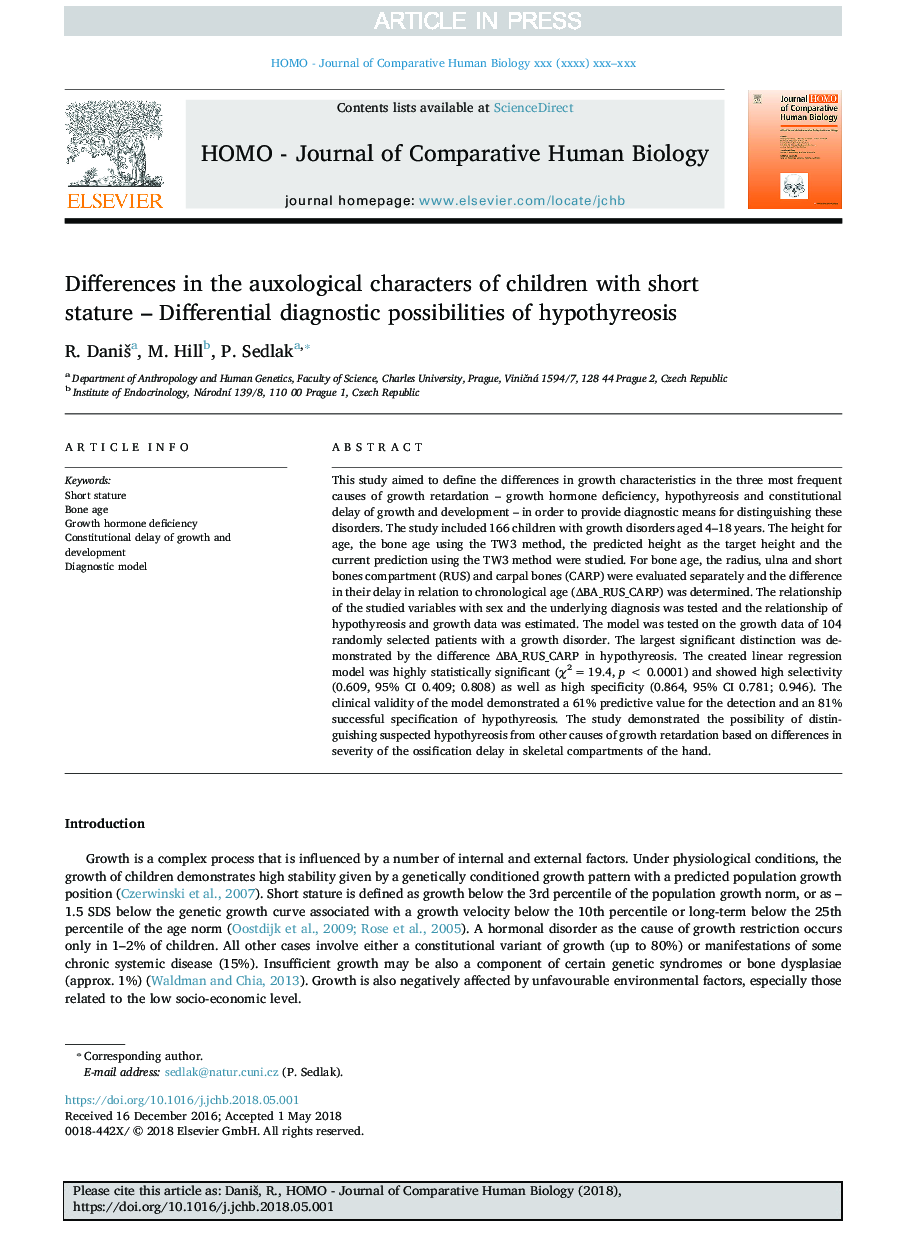| Article ID | Journal | Published Year | Pages | File Type |
|---|---|---|---|---|
| 6554429 | HOMO - Journal of Comparative Human Biology | 2018 | 7 Pages |
Abstract
This study aimed to define the differences in growth characteristics in the three most frequent causes of growth retardation - growth hormone deficiency, hypothyreosis and constitutional delay of growth and development - in order to provide diagnostic means for distinguishing these disorders. The study included 166 children with growth disorders aged 4-18â¯years. The height for age, the bone age using the TW3 method, the predicted height as the target height and the current prediction using the TW3 method were studied. For bone age, the radius, ulna and short bones compartment (RUS) and carpal bones (CARP) were evaluated separately and the difference in their delay in relation to chronological age (ÎBA_RUS_CARP) was determined. The relationship of the studied variables with sex and the underlying diagnosis was tested and the relationship of hypothyreosis and growth data was estimated. The model was tested on the growth data of 104 randomly selected patients with a growth disorder. The largest significant distinction was demonstrated by the difference ÎBA_RUS_CARP in hypothyreosis. The created linear regression model was highly statistically significant (Ï2â¯=â¯19.4, pâ¯<â¯0.0001) and showed high selectivity (0.609, 95% CI 0.409; 0.808) as well as high specificity (0.864, 95% CI 0.781; 0.946). The clinical validity of the model demonstrated a 61% predictive value for the detection and an 81% successful specification of hypothyreosis. The study demonstrated the possibility of distinguishing suspected hypothyreosis from other causes of growth retardation based on differences in severity of the ossification delay in skeletal compartments of the hand.
Related Topics
Life Sciences
Agricultural and Biological Sciences
Ecology, Evolution, Behavior and Systematics
Authors
R. Daniš, M. Hill, P. Sedlak,
